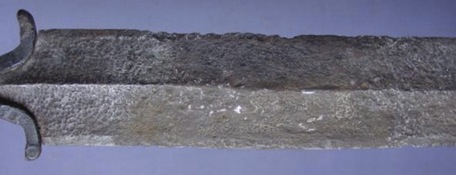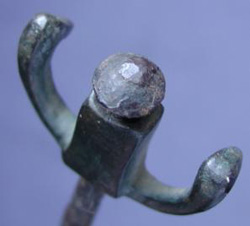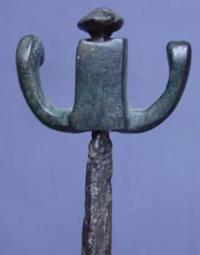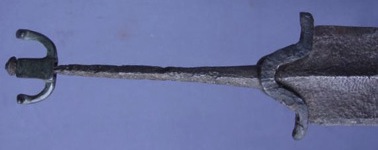As he says, most examples of these swords with scabbards intact are in national museums or important private collections.
The hilt style is of typical La Tene form and comprising bronze mounts. Blade of large and wide proportions - blade width of around two inches. Scabbard appears to be made of iron and is in excellent shape. For £7995.00 it's too rich for my blood but one can drool, and learn from looking at the detail of the photos.
It's not every day we can see one of these up close.

Scabbard Detail 2

Scabbard Detail 1

Blade Detail 2

Blade Detail 1

Pommel Detail 2

Pommel Detail 1

Hilt Detail

Sword and Scabbard c. 200BCE